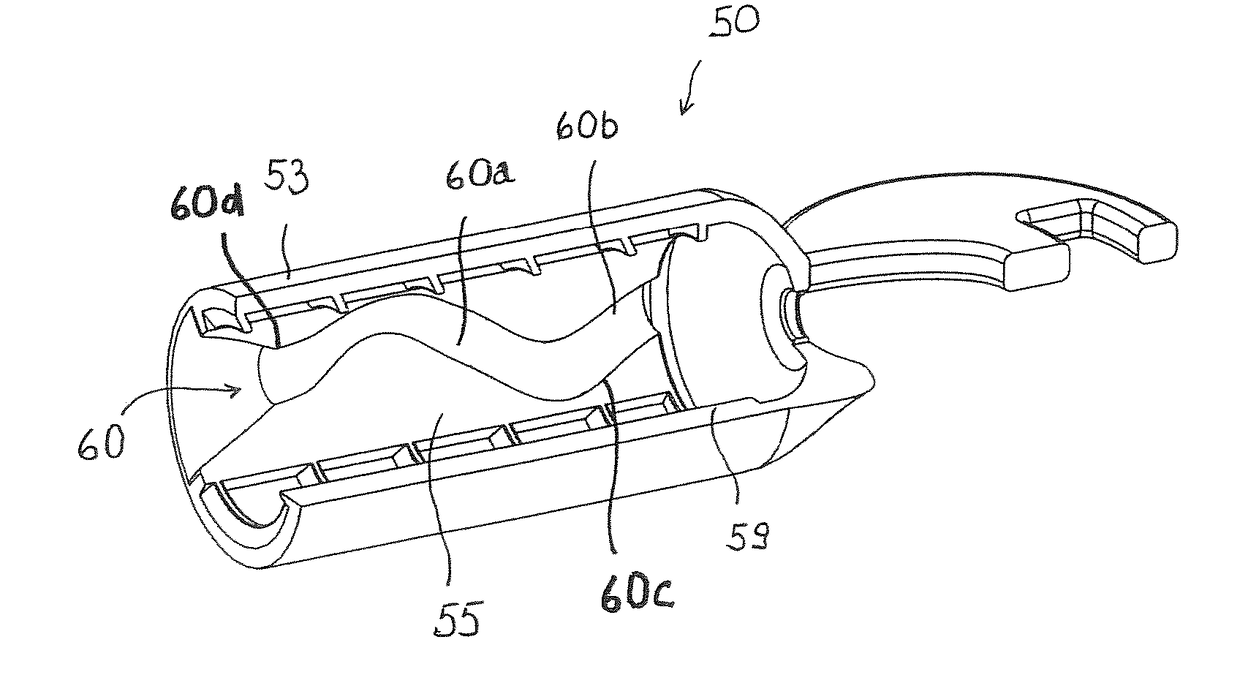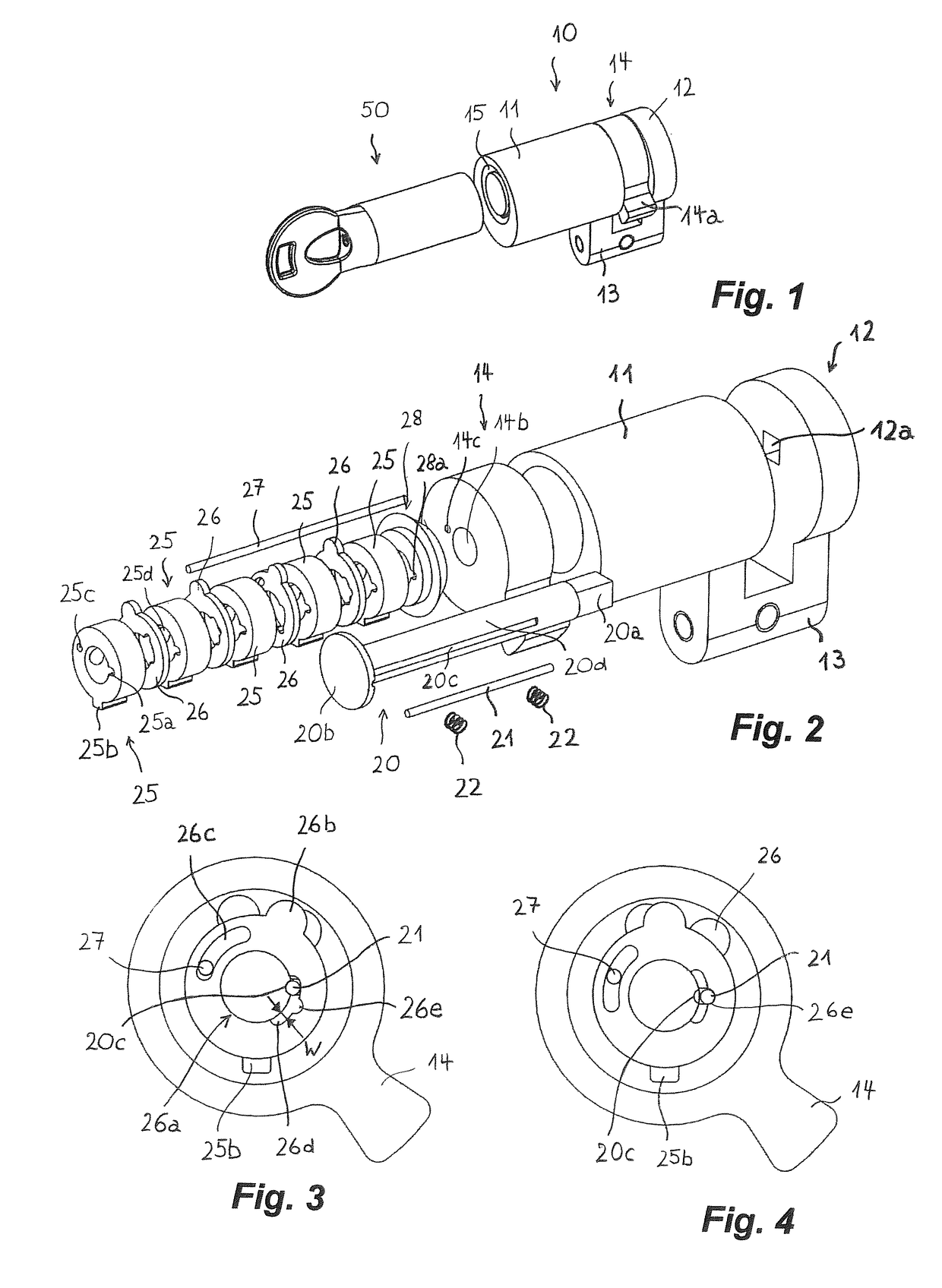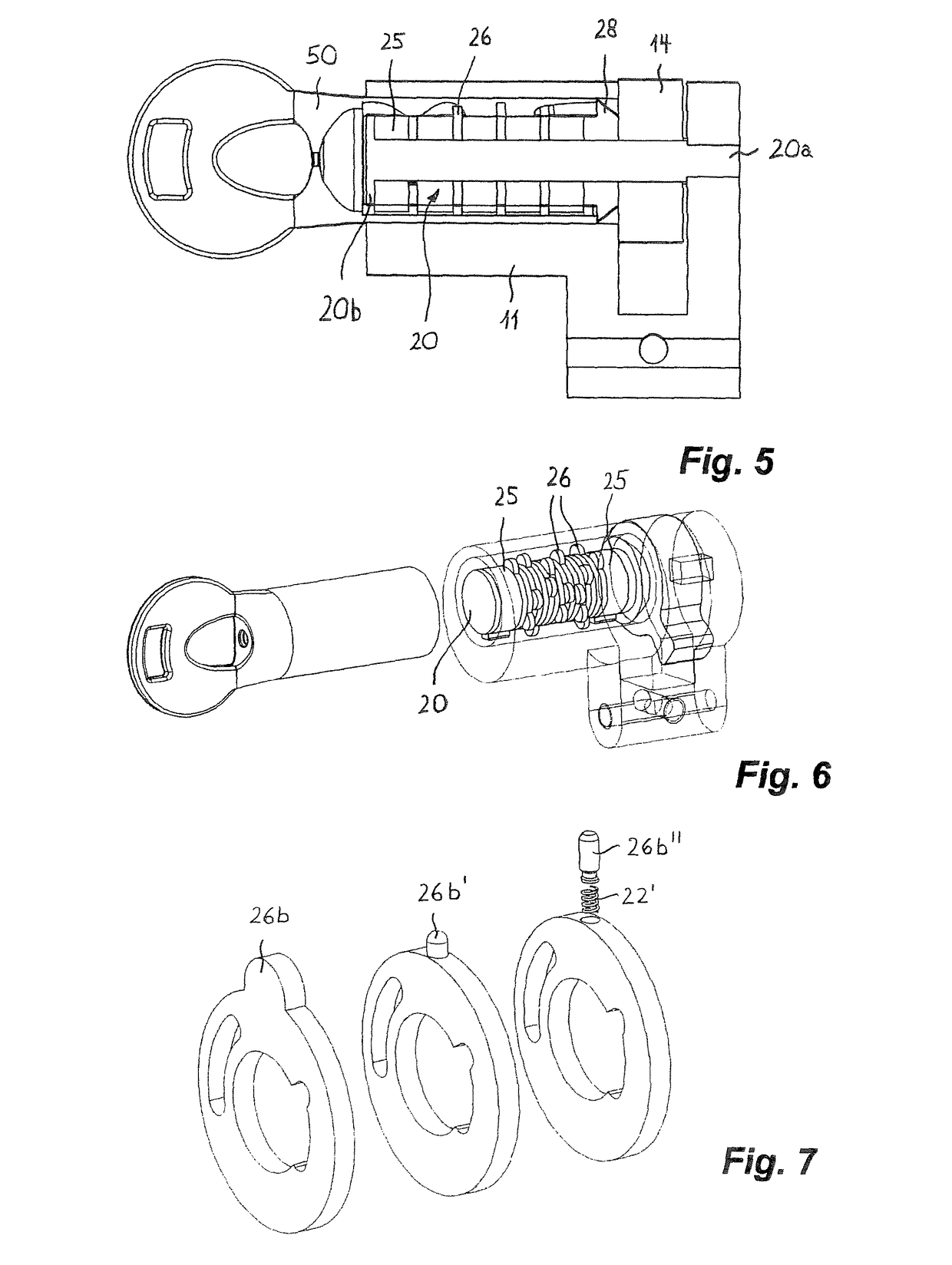Key and lock
a key and lock technology, applied in the field of keys and locks, can solve the problems of limited security of locks, difficult, and difficult to produce false keys, and achieve the effect of guarantying a high security level
- Summary
- Abstract
- Description
- Claims
- Application Information
AI Technical Summary
Benefits of technology
Problems solved by technology
Method used
Image
Examples
Embodiment Construction
[0109]FIG. 1 shows a lock 10 together with a key 50. The lock 10 comprises a housing 11 enclosing the validating means for validating the key 50, an end plate 12 connected to the housing 11 via a bridge element 13 and a driving element 14 with a cam 14a, which is arranged between the spacing of the housing 11 and the end plate 12. If the correct key 50 is inserted, the driving element 14 can be rotated to unlock or lock the actual locking mechanism, e.g. a bolt of a door or the like.
[0110]The lock 10 is designed such that a key 50 with a hollow geometry can be inserted. To this end, the lock 10 has a key cavity 15 which surrounds the validating means. The key cavity 15 has an annular form for receiving a portion of the key, in which a coding cavity is formed (see e.g. the coding cavity 55 in FIG. 11).
[0111]FIG. 2 shows the various components of the lock 10. The latter comprises a stator 20, which in the assembled state extends through the housing 11 and the driving element 14 into a...
PUM
 Login to View More
Login to View More Abstract
Description
Claims
Application Information
 Login to View More
Login to View More - R&D
- Intellectual Property
- Life Sciences
- Materials
- Tech Scout
- Unparalleled Data Quality
- Higher Quality Content
- 60% Fewer Hallucinations
Browse by: Latest US Patents, China's latest patents, Technical Efficacy Thesaurus, Application Domain, Technology Topic, Popular Technical Reports.
© 2025 PatSnap. All rights reserved.Legal|Privacy policy|Modern Slavery Act Transparency Statement|Sitemap|About US| Contact US: help@patsnap.com



